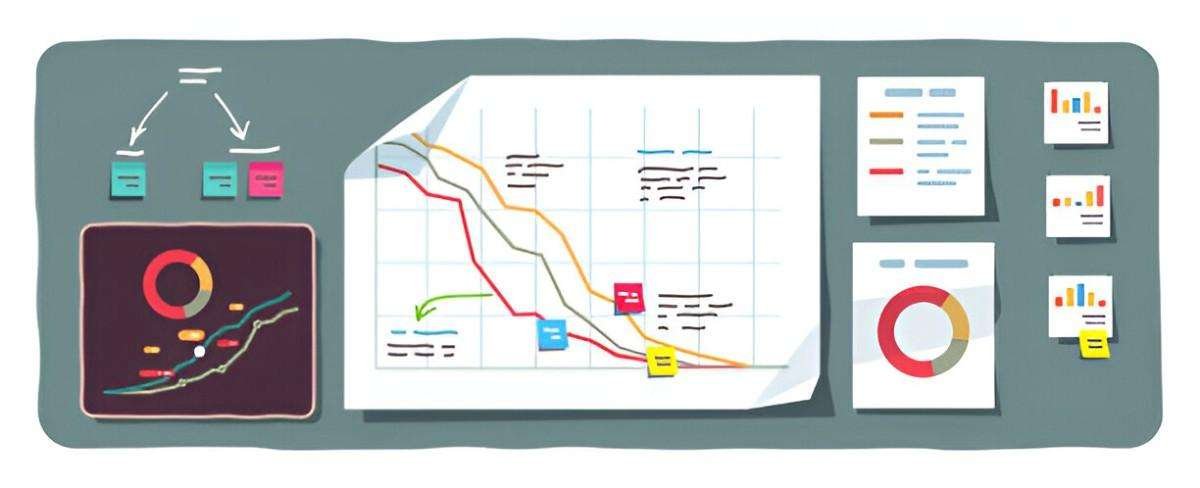Embarking on the journey of transforming a scientific discovery or innovation into a viable market product is no small feat. As an early-stage entrepreneur, I’ve often found that the path from the lab to the market involves many challenges, hurdles, and critical decisions. It’s not simply about having an idea or invention; it’s about translating that into something valuable and sustainable in the commercial world. The process involves a combination of technical, financial, and market-driven decisions that must be navigated carefully. In this article, I will explore the key components of the lab-to-market roadmap for early-stage entrepreneurship and provide insights that can help others in similar positions.
Table of Contents
The Lab-to-Market Journey
The transition from the lab to the market generally follows a structured progression, but the pace and success of each stage can vary depending on the industry, technology, or even the entrepreneur’s approach. There are a few common stages that are universal across most scientific and technological domains. These stages include:
- Idea Generation and Conceptualization
- Technology Validation and Proof of Concept
- Product Development and Refinement
- Market Entry and Commercialization
- Growth and Scaling
Each of these steps has its own unique set of challenges, and navigating them requires a mix of technical know-how, business acumen, and an understanding of the market. Let’s dive deeper into each stage.
1. Idea Generation and Conceptualization
This is the foundation of the lab-to-market journey. In my experience, this is often the most exciting yet uncertain phase. It involves generating an innovative idea or identifying an unmet need in the market. Many entrepreneurs start by exploring research in the academic or industrial fields. For example, a breakthrough in material science or biotechnology could lead to the conceptualization of a new product that could revolutionize an industry.
At this stage, I focus on defining the problem, the solution, and the unique value proposition. It’s essential to clearly articulate how the idea fits into the current market and what potential it has to address real-world problems. Often, I spend considerable time researching the industry, examining the existing solutions, and understanding the pain points of potential customers. A crucial part of this stage is performing a feasibility analysis to evaluate whether the idea can be translated into a functional product.
In the early stages of my ventures, I also conduct a technology readiness assessment. This allows me to evaluate the maturity level of the underlying technology and the required resources to develop it. A simple tool like the Technology Readiness Level (TRL) framework can help assess whether the idea is a concept or something ready for further development.
2. Technology Validation and Proof of Concept
Once I’ve validated that the idea has potential, the next stage is developing a proof of concept (PoC). This is a critical stage because it allows me to demonstrate that the technology works in the real world. This is not yet a full-fledged product, but a demonstration of how the technology can solve the identified problem.
Here, I focus on validating the scientific principles and assessing the performance of the technology. For example, if I’m working on a novel pharmaceutical treatment, I need to demonstrate that the drug has the desired effect on human cells in a laboratory setting. If I’m developing a new type of material, I may need to show that the material performs as expected under different conditions.
To support my PoC development, I typically engage with research partnerships, whether academic or industry-focused, to ensure I have access to the right technical expertise. Collaborating with research institutions or universities can provide access to cutting-edge equipment and facilities, helping me move from lab experiments to real-world applications.
At this stage, obtaining intellectual property protection is crucial. Whether I’m filing for patents or trade secrets, ensuring that my innovation is legally protected helps establish a foundation for future commercialization. For instance, a solid patent portfolio can be a key asset when negotiating with investors, partners, or potential customers.
3. Product Development and Refinement
Once I’ve validated the technology, the next step is developing a marketable product. This is the stage where I refine the technology and ensure it meets the demands and expectations of the market. Product development isn’t just about improving the underlying technology; it’s about aligning the product with the needs of customers.
In my own ventures, I often employ an iterative development process. I develop a prototype, gather feedback from potential customers or experts in the field, and use that feedback to refine the product. This process continues until I have a product that is ready for market testing.
At this point, I also need to consider the manufacturing process. Whether I’m creating a physical product or a software-based solution, understanding the logistics of production, scaling, and supply chain management is key. If I’m developing a hardware product, I may need to invest in prototypes, tooling, and production facilities. For a digital product, I focus on software development, user testing, and platform integration.
I also place a strong emphasis on regulatory compliance. Depending on the industry, products may need to meet specific regulatory requirements before they can enter the market. For example, medical devices, pharmaceuticals, or food products often require approval from agencies like the FDA (Food and Drug Administration) or the USDA (U.S. Department of Agriculture).
4. Market Entry and Commercialization
With a finalized product ready for launch, I focus on commercialization. This phase involves determining how to bring the product to market and ensure it meets consumer demand. A key aspect of this phase is deciding on the go-to-market strategy.
This strategy involves multiple considerations, such as pricing, distribution channels, branding, and marketing efforts. In my experience, identifying early adopters is crucial for building momentum. These early customers can provide valuable feedback, help refine the product, and serve as advocates when promoting it to a broader audience.
I also need to think about how to fund the commercialization effort. Early-stage funding often comes from venture capitalists, angel investors, or government grants. In many cases, I also turn to crowdfunding platforms to gauge interest and generate the initial capital needed to launch the product.
5. Growth and Scaling
Once my product is launched, the focus shifts to growth and scaling. This is where the business can either thrive or flounder. The challenge is expanding the business while maintaining product quality and customer satisfaction. I typically spend this phase fine-tuning my operations, building a solid customer support system, and expanding my distribution network.
Scaling often involves additional rounds of funding to support expansion. This may include hiring more staff, increasing production capacity, or expanding into new geographic regions. Throughout this phase, I continually assess whether the business model remains sustainable and scalable, and I adjust accordingly.
Example of Scaling
Consider an example where a new biotech startup has developed a groundbreaking health supplement. After successful market entry, the company needs to scale. Initially, the company might produce 5,000 units per month, but demand quickly grows to 50,000 units. Scaling the operation means increasing production capacity, which could require additional machinery, hiring staff, and securing more distribution partners.
The financial equation for scaling might look like this:
If the cost per unit is $20 at a production volume of 5,000 units, the total cost is:
\text{Total cost} = 5,000 \times 20 = 100,000 , \text{USD}However, to scale to 50,000 units, the cost per unit could drop due to economies of scale. If the cost per unit drops to $15 at a volume of 50,000 units, the new total cost is:
\text{New total cost} = 50,000 \times 15 = 750,000 , \text{USD}This shows how scaling can drastically change the financials, but it also comes with its challenges, such as financing the expansion and maintaining the supply chain.
Conclusion
The lab-to-market journey is complex and involves navigating technical, financial, and market challenges. As an entrepreneur, I’ve learned that success requires a combination of strategic planning, adaptability, and an unwavering commitment to solving real-world problems. By following a structured roadmap, from idea generation to commercialization and scaling, early-stage entrepreneurs can increase their chances of successfully bringing innovations to the market. It’s a long journey, but it’s one that can yield immense rewards for those who are prepared to take on the challenges and embrace the opportunities along the way.





